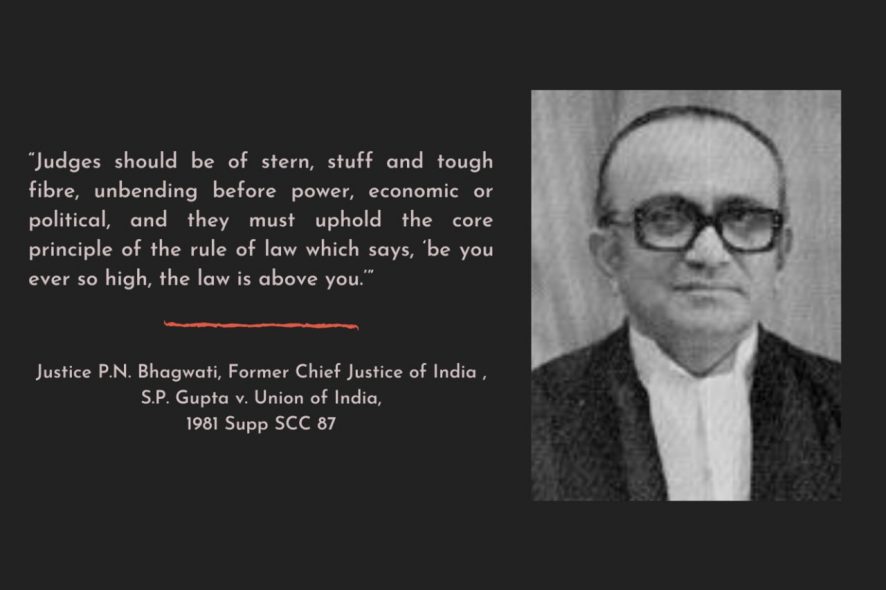— Indian Supreme Court in the process of transition — Position till early 1970’s and after — Concepts used to avoid change stated — Activist judges — Contribution of Justice Bhagwati — Some highlights of transformation of Indian jurisprudence at the instance of Justice Bhagwati in the judicial process — PIL is a major strategy in the area of legal aid to the poor — Greatest Contribution of Chief Justice Bhagwati — Decisions on Legal Aid — Observations of Justice Bhagwati in Hussainara Khatoon (1980) and Suk Das (1986) — Major thrusts gave to PIL by Justice Bhagwati briefly examined — Observations in Judges transfer case (1981) quoted — Letter petitions in PIL — Contribution of Justice Bhagwati in PIL is certainly enormous — Judicial employment and Human Rights with social justice — Inter-relation of Parts III and IV of the Constitution of India — Case laws referred to and discussed in this regard — Facets of Art. 21 — Case laws cited — Revolutionary interpretation to Art. 21 by Justice Bhagwati — Judicial Reforms and People’s participation — Lok Adalats — Contribution of Justice Bhagwati — Concluding note — Bhagwati era will find a special place for its signal contribution to human rights development and judicial creativity in the cause of social justice
The Indian Supreme Court is in the process of transition. Till early 1970s the Court with few honourable exceptions, acted as an instrument of status quo upholding the traditions of Anglo-Saxon jurisprudence and resisting radical innovations in the use of judicial power to promote social change under the Republican Constitution. The natural inclination of lawyers and Judges was to look for precedents in the “Mother Country” and to interpret a revolutionary document like the Constitution of India in the light of a socio-economic philosophy alien to our freedom movement and the aspirations of a liberated people. Concepts such as “Rule of Law”, “Judicial Restraint”, “Separation of Powers”, “Supremacy of Fundamental Rights over Directive Principles”, “Independence of Judiciary”, “Contempt of Court” and “Certainty in Law” were used conveniently to avoid change wherever possible, delay it whenever inevitable and dilute it as far as practicable. The resultant legal culture was not very different from those of pre-Independence days.
Read more..
Note: This article was first published in Supreme Court Cases Journal (1987) 1 SCC J-1. It has been reproduced with the kind permission of Eastern Book Company.







